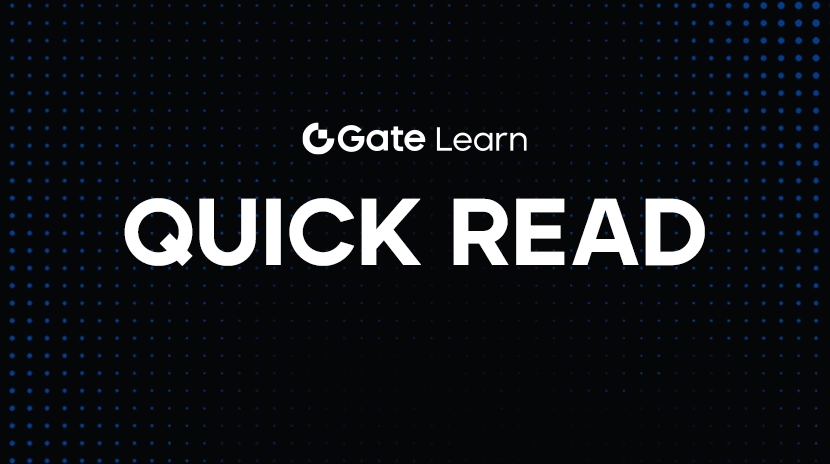Explication de Flare Crypto: Qu'est-ce que le réseau Flare et pourquoi cela compte en 2025

Source de l'image :Flare Introduit une machine blockchain pour accélérer le déploiement des nœuds avec Google Cloud
Le réseau Flare est une blockchain de couche 1 de nouvelle génération conçue pour résoudre l'un des défis les plus persistants de l'espace crypto : l'accès sécurisé et décentralisé aux données externes. En 2025, alors que la finance décentralisée (DeFi), les NFT et les écosystèmes inter-chaînes deviennent de plus en plus complexes et interdépendants, la demande de données fiables et d'interopérabilité est plus grande que jamais. C'est là que Flare brille.
Contrairement à de nombreuses blockchains traditionnelles qui opèrent de manière isolée, Flare est spécifiquement conçu pour permettre aux contrats intelligents d'interagir de manière sécurisée avec des données provenant d'autres blockchains et sources du monde réel. Grâce à son innovant Flare Time Series Oracle (FTSO) et State Connector, Flare permet aux développeurs de créer des dApps qui sont plus dynamiques, riches en données et interopérables à travers les écosystèmes.
Cette conception fait de Flare une couche d'infrastructure critique pour les projets visant à intégrer des données hors chaîne, telles que les prix, les événements ou les états de transaction, dans des applications sur chaîne sans avoir à compter sur des oracles centralisés. Il aborde les problèmes de confiance, de sécurité et de décentralisation dans les flux de données, un problème de longue date dans le développement Web3.
À partir de 2025, Flare est déjà adopté pour les plateformes DeFi inter-chaînes, les outils de pont d'actifs, les places de marché NFT et les applications de données en temps réel. Son jeton natif, FLR, est essentiel à la gouvernance, au staking et aux frais de transaction, alimentant davantage l'utilité et la décentralisation du réseau.
Dans une industrie qui tend vers l'interopérabilité et la pertinence du monde réel, Flare se positionne non seulement comme une autre blockchain, mais comme un tissu connectif - une blockchain qui rassemble les autres et débloque de nouvelles possibilités pour les développeurs, les utilisateurs et les protocoles.
Avec des intégrations stratégiques, une liste croissante de partenariats et des améliorations continues de son infrastructure, Flare Network émerge comme une couche fondamentale pour la prochaine vague d'innovation décentralisée en 2025.
Qu'est-ce que Flare Crypto ? Un aperçu pour débutants
Flare Crypto fait référence à la Réseau Flareet son jeton natif, FLR, qui forment ensemble un écosystème blockchain révolutionnaire conçu pour débloquer l'accès décentralisé aux données hors chaîne. Lancé pour résoudre un défi majeur dans le développement de la blockchain - l'interopérabilité et la disponibilité des données - Flare vise à combler le fossé entre les blockchains isolées et les informations du monde réel.
Au cœur de Flare se trouve une blockchain de couche 1 entièrement compatible avec la machine virtuelle Ethereum (EVM). Cela signifie que les développeurs peuvent déployer des contrats intelligents basés sur Ethereum directement sur Flare avec des modifications minimales. Mais Flare va au-delà d'être simplement une "autre chaîne EVM". Il est optimisé de manière unique pour fournir des données décentralisées de haute intégrité aux contrats intelligents via des protocoles intégrés.
Flare permet aux applications décentralisées (dApps) d'accéder de manière sécurisée et décentralisée à des données en temps réel telles que les prix des actifs, les confirmations d'événements sur d'autres blockchains et même des informations basées sur Internet. Ceci est crucial car de nombreuses dApps, en particulier dans la DeFi, dépendent fortement de données hors chaîne pour fonctionner correctement.
Ce qui distingue Flare, c'est qu'il apporte ces données en chaîne sans dépendre des fournisseurs d'oracle centralisés. Au lieu de cela, il utilise ses protocoles natifs :
- Flare Time Series Oracle (FTSO) pour les données de prix et de séries chronologiques
- Connecteur d'état pour lire et vérifier les événements provenant d'autres blockchains
La combinaison de ces outils permet à Flare d'être une « blockchain pour les données » - une plateforme où les données deviennent un bien public accessible, décentralisé et fiable.
Que vous soyez un débutant plongeant simplement dans la crypto ou un développeur explorant l'infrastructure blockchain, la compréhension de Flare offre un aperçu de l'avenir de la communication inter-chaînes, de l'accessibilité des données et de la confiance décentralisée.
Comment fonctionne le réseau Flare : caractéristiques clés et architecture

Source de l'image : Flare intègre des fournisseurs de données institutionnels pour renforcer la décentralisation
Flare Network se distingue dans l'écosystème blockchain en raison de son architecture innovante axée sur l'acquisition de données sans confiance et l'interopérabilité. Sa conception de base permet aux contrats intelligents sur Flare d'accéder à un large éventail de sources de données décentralisées et du monde réel sans avoir recours à des oracles centralisés ou tiers. Voici un aperçu plus approfondi de son fonctionnement :
1. Flare Time Series Oracle (FTSO)
Le FTSO est un oracle décentralisé natif intégré directement dans la blockchain Flare. Il collecte et fournit des données précises et en temps réel (comme les prix des crypto-monnaies) aux applications décentralisées (dApps) sur le réseau. Voici comment cela fonctionne :
- Les fournisseurs de données indépendants soumettent des estimations on-chain.
- Ces estimations sont agrégées et pondérées en fonction de leur exactitude historique.
- Le résultat est un flux de données hautement fiable et minimisant la confiance disponible pour les contrats intelligents.
Ce système permet aux développeurs de construire des applications DeFi et des actifs synthétiques qui dépendent de données précises et résistantes à la manipulation sans avoir besoin d'oracles centralisés.
2. State Connector
Le State Connector est un autre composant révolutionnaire de l'architecture de Flare. Il permet au réseau d'acquérir et de vérifier en toute sécurité les données des blockchains externes et des API web, faisant de Flare un véritable hub d'interopérabilité.
Les capacités clés comprennent:
- Fonctionnalité de chaîne croisée: Permet aux dApps sur Flare d'interagir avec d'autres blockchains comme Bitcoin, Ethereum et XRP Ledger sans passerelles.
- Validation décentralisée: Les événements provenant de chaînes externes sont validés par un mécanisme de consensus sur Flare, garantissant sécurité et fiabilité.
- Support pour les FAssets : Représentations tokenisées de jetons non basés sur des contrats intelligents (par exemple, XRP, BTC, DOGE) qui peuvent être utilisées au sein de l'écosystème DeFi de Flare.
Ce composant donne à Flare un avantage en permettant des échanges DeFi inter-chaînes, des transactions NFT et des écosystèmes de jeux interopérables.
3. Compatibilité EVM
Flare est entièrement compatible avec la machine virtuelle Ethereum (EVM), ce qui signifie que les développeurs peuvent déployer des contrats intelligents écrits en Solidity, tout comme sur Ethereum. Cette compatibilité :
- Facilite le portage des applications Ethereum existantes vers Flare.
- Prend en charge des outils tels que MetaMask, Remix et Hardhat.
- Attire les développeurs familiers avec l'écosystème Ethereum.
4. Preuve de participation (PoS) - Consensus basé sur la participation
Flare utilise une variante du protocole de consensus Avalanche, qui est rapide, évolutif et sécurisé. Associé à son système de preuve d'enjeu, il offre :
- Débit élevé pour les dApps
- Finalité à faible latence sur les transactions
- Validation écoénergétique par rapport aux systèmes de preuve de travail (PoW)
5. Modèle d'Utilité Double
Contrairement à de nombreux blockchains, Flare intègre deux protocoles de base - FTSO et State Connector - directement au niveau de base, plutôt que de s'appuyer sur des services tiers. Cela garantit une plus grande efficacité, des coûts plus bas et une plus grande confiance.
Ensemble, ces fonctionnalités positionnent Flare Network comme une infrastructure de premier plan pour les applications décentralisées, axées sur les données et interopérables. Que ce soit pour DeFi, GameFi ou les flux de données inter-chaînes, la conception de Flare offre une base évolutive et sécurisée pour la prochaine génération d'innovation blockchain.
Flare vs Autres plateformes de contrats intelligents: Qu'est-ce qui le distingue?
Contrairement à de nombreuses blockchains de couche 1, Flare se concentre de manière unique sur l'accessibilité des données et l'interopérabilité. Ses protocoles natifs permettent :
- Compatibilité inter-chaînes: Permettre aux actifs et aux données de se déplacer de manière transparente entre différentes blockchains.
- Accès aux données décentralisé : fournir aux dApps des données fiables et en temps réel sans dépendre de sources centralisées.
Cela positionne Flare comme une plateforme puissante pour la construction d'applications complexes et axées sur les données dans divers secteurs.
Cas d'utilisation de Flare: Applications et intégrations dans le monde réel
Les capacités de Flare ouvrent la porte à de nombreuses applications dans le monde réel :
- Finance décentralisée (DeFi) : Flare prend en charge la création d'actifs synthétiques tels que FXRP, permettant aux utilisateurs de gagner un rendement sur XRP grâce au jalonnement.
- NFT croisés et jeux : les développeurs peuvent construire des plateformes NFT et des jeux qui interagissent avec plusieurs blockchains.
- Applications dApps axées sur les données : Les applications qui nécessitent des données en temps réel, telles que les marchés prédictifs ou les plateformes d'assurance, peuvent tirer parti des oracles de Flare pour obtenir des informations précises.
Jeton Flare (FLR) : Utilité, Offre et Tokenomie
Le jeton FLR est la crypto-monnaie native du réseau Flare, conçu pour alimenter l'écosystème et inciter à la participation. En tant que composant crucial de l'infrastructure de Flare, le FLR a plusieurs rôles qui garantissent que le réseau reste décentralisé, sécurisé et fonctionnel.
Utilitaire de FLR
Gouvernance du réseau:
- Les détenteurs de FLR ont la possibilité de participer au processus décisionnel sur les mises à jour du protocole et les changements du réseau grâce à la gouvernance décentralisée.
- Cela encourage la participation communautaire et aligne les intérêts des développeurs, des utilisateurs et des parties prenantes.
Délégation à l'Oracle de séries temporelles Flare (FTSO):
- Les utilisateurs peuvent déléguer leurs jetons FLR aux fournisseurs de données qui contribuent au système d'oracle décentralisé.
- En retour, ils gagnent des récompenses sous forme de FLR pour aider à sécuriser des données précises et en temps réel pour les contrats intelligents.
Garantie pour les FActifs :
- FLR peut être utilisé comme garantie pour émettre des FAssets - versions synthétiques de jetons non-smart contract comme XRP, DOGE et LTC - sur le réseau Flare.
- Cela ouvre la voie à l'utilisation de ces actifs dans les applications DeFi sur Flare.
Frais de transaction et gaz :
- Tout comme ETH sur Ethereum, FLR est utilisé pour payer les frais de gaz associés à l'exécution de contrats intelligents et de transactions sur le réseau.
Opportunités de mise en jeu et de rendement :
- Au-delà de déléguer pour les récompenses FTSO, les détenteurs de FLR peuvent également bloquer leurs jetons dans des pools de liquidité ou des plateformes DeFi construites sur Flare pour gagner un revenu passif.
Offre de jetons et distribution
- Offre initiale : 100 milliards de jetons FLR ont été créés à la genèse.
- Distribution Airdrop: Une partie importante de FLR a été distribuée aux détenteurs de XRP à travers une série de largages, ce qui en fait l'un des lancements les plus discutés dans la communauté XRP.
- Versements mensuels : Après l'airdrop initial, les jetons FLR restants sont distribués mensuellement sur 36 mois via le mécanisme FlareDrop.
Programme de Brûlage et de Contrôle de l'Approvisionnement
Dans le but d'augmenter la valeur à long terme et de réduire un éventuel excès d'approvisionnement, le réseau Flare a mis en place une stratégie de brûlage de jetons :
- Début 2025, Flare a déjà brûlé plus de 66 millions de FLR dans le cadre de son plan de déflation.
- L'objectif est de brûler 2,1 milliards de jetons FLR d'ici janvier 2026, réduisant ainsi l'inflation et soutenant la rareté des jetons.
Cette stratégie est conçue pour favoriser une économie de jetons saine en contrôlant la circulation et en incitant à la détention à long terme.
Performances du marché et tendances des prix FLR
FLR a montré une activité commerciale importante sur les principales bourses, réagissant souvent aux annonces majeures du réseau et aux intégrations de l'écosystème. En 2025, sa performance reste étroitement liée à l'adoption plus large de l'infrastructure inter-chaînes de Flare et des services d'oracle.
Vous pouvez vérifier le prix en direct et les performances historiques de FLR surLa page de trading FLR/USDT de Gate.com.
Comment acheter et stocker en toute sécurité Flare (FLR)
Les jetons FLR peuvent être achetés sur diverses bourses de cryptomonnaie. Une fois acquis, il est essentiel de les stocker en toute sécurité :
- Portefeuilles matériels : Pour le stockage à long terme, des portefeuilles matériels comme Ledger ou Trezor offrent une sécurité renforcée.
- Portefeuilles logiciels : Pour un accès plus fréquent, envisagez d'utiliser des portefeuilles logiciels réputés qui prennent en charge le FLR.
Assurez-vous toujours que le portefeuille que vous choisissez est compatible avec FLR et suit les meilleures pratiques de sécurité.
Derniers développements et partenariats Crypto Flare en 2025
Flare continue à évoluer avec des développements significatifs :
- Intégration avec Goldsky: Amélioration de la synchronisation des données de la blockchain.
- Partenariat avec Kinetic: Expansion des capacités DeFi sur le réseau Flare.
- Lancement de FAssets V1.1: Renforcement de la liquidité et de l'efficacité avant V2.
Ces initiatives démontrent l'engagement de Flare à favoriser un écosystème blockchain robuste et polyvalent.
Est-ce que Flare est un bon investissement ? Tendances des prix et opinions d'experts
La focalisation de Flare sur l'interopérabilité et l'accessibilité des données le positionne comme un projet prometteur dans l'espace de la blockchain. Cependant, comme pour tout investissement, il est crucial de mener des recherches approfondies et de tenir compte de la volatilité du marché. Suivre les développements et les partenariats de Flare peut fournir des informations sur sa trajectoire de croissance potentielle.
Le rôle de Flare dans le pontage des actifs à travers les blockchains
L'architecture de Flare facilite les transferts d'actifs transparents entre différentes blockchains, ce qui permet :
- Représentation d'actifs inter-chaînes : Permettre aux actifs d'une blockchain d'être utilisés sur une autre sans intermédiaires centraux.
- Liquidité améliorée : En reliant les actifs, Flare augmente la liquidité dans divers écosystèmes de blockchain.
Cette interopérabilité est cruciale pour la croissance et l'intégration des applications décentralisées à travers l'espace crypto.
Conclusion
Flare Network émerge comme un acteur clé dans l'espace de la crypto en répondant à des besoins critiques tels que l'interopérabilité entre chaînes et l'accès décentralisé aux données du monde réel. Avec son infrastructure unique, telle que le connecteur d'état et l'oracle de séries chronologiques, Flare permet aux contrats intelligents d'interagir de manière sécurisée avec des blockchains externes et des sources de données. Soutenu par des partenariats en cours, des mises à niveau de l'écosystème et un modèle de jeton déflationniste, Flare est bien positionné pour la croissance en 2025. Alors que la demande d'applications multi-chaînes continue de croître, l'approche innovante de Flare pourrait en faire une couche fondamentale pour la prochaine génération de solutions décentralisées.
Articles Connexes

Pi Network (PI) au taux de change du franc CFA d'Afrique de l'Ouest (XOF) : Valeur actuelle et guide de conversion

Comment vendre la pièce PI : Guide du débutant

Valeur de Pi Crypto : Lancement sur Mainnet le 20 février 2025 & Prédictions de prix futures

Qu'est-ce que FAFO : jeton MEME dérivé de la plateforme sociale de Trump

Est-ce que XRP est un bon investissement? Un guide complet sur son potentiel


